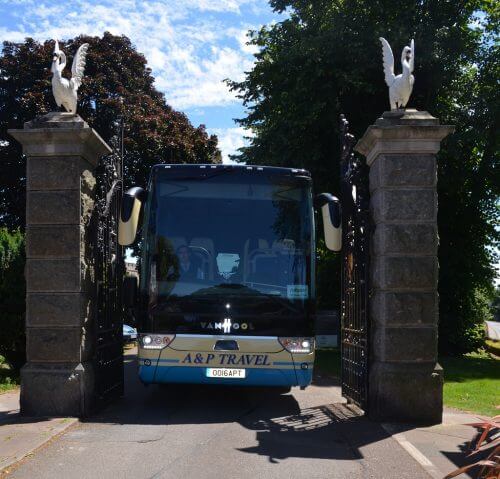
Alan Payling visits Torre Abbey on Torquay seafront to investigate what is on offer for coach parties when they visit the English Riviera
Visiting a monastery might not have a great deal of appeal to the average coach party, particularly as they have in the main been closed for nearly 500 years. Even one that sits right on Torquay sea front might again, on the face of it, not have a great deal to offer. But, Torquay’s Torre Abbey is not just any old monastery and, for a number of reasons that could have wide appeal, it’s a place that offers a great deal to passengers and operators alike.
For passengers, while Torre Abbey is indeed the site of an ancient monastery, in addition the site offers beautiful gardens replete with an exotic palm house, an art gallery with sea views, a museum with sea views, an historic Georgian house with period artefacts and sea views, an exhibition of local artworks including beautiful pottery with sea views and history with a capital H.
The history of Torre Abbey includes visits from some of England’s greatest naval heroes and the involvement of the Abbey’s tithe barn in one of the most momentous events in England’s history. Oh, and there is a tea shop which overlooks the seafront and the sea. People need a cup of tea after taking in all that Torre Abbey has to offer. For operators, it gives them the chance to take passengers somewhere new and interesting when they bring coach parties to this part of the world.
The history
But first, the history: there is quite a bit of it so I’ll keep it as short as I can. The monastery was first set up in 1190 and the first building, the tithe barn, was completed in 1210. When I talk about history, this is really ancient stuff. The abbey prospered, becoming one of the wealthiest institutions in the land, largely from its extensive holdings of land. So much so that the nearest town – Newton Abbot – was named to celebrate the abbey’s leading figure, the Abbot. Hence, it became the Abbot’s new town (a ‘ton’ being an old word for a town).
So wealthy was the monastery that the monks had to ensure that, were there to be an invasion from the sea – a potent threat – they could protect themselves. Some of the remaining buildings, particularly the Mohun gate house, reflect such fears and resemble the gates to ancient cities in their robust design and the fact that they have survived largely intact. Some of the other buildings that have survived are in remarkably good condition: this is far from being a complete ruin.
The idyll that the monks enjoyed for so many centuries – just look at the location – came to an end when Henry VIII came to the throne. In 1534 he introduced the Act of Supremacy which led to the dissolution of the monasteries in England, Ireland and Wales between 1536 and 1541. Torre Abbey’s monks were evicted in 1539. This then involved selling the former lands of the monasteries. The land Torre Abbey stands on eventually ended up in the hands of the Cary family in 1662 where it remained until 1929 until it was sold to Torquay Corporation for the princely sum of £40,000. […]
By subscribing you will benefit from:
- Operator & Supplier Profiles
- Face-to-Face Interviews
- Lastest News
- Test Drives and Reviews
- Legal Updates
- Route Focus
- Industry Insider Opinions
- Passenger Perspective
- Vehicle Launches
- and much more!


